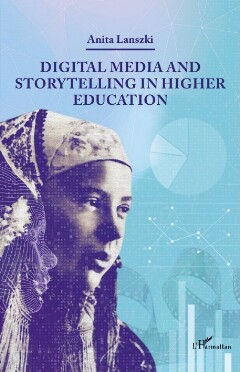

OCR
Part III. Digital Media and Storytelling in Research ] 105 event. Historians have recorded many individual oral history narratives, which have been organized by cultural institutions (mostly libraries and universities) into databases that are also available online.* Iwitness is a collection of Holocaust survivor and eyewitness testimony videos founded by Steven Spielberg in 1994. The USC Shoah Foundation’s video interviews have been collected over 12 years and are available in 24 languages from 57 countries. Pedagogical best practices were used to develop the videos which included student engagement, discussion, and creative activities. The integration of DST was a natural fit, as it incorporates students’ reflections on first-hand stories, combined with the student’s prior knowledge and experience. The method allows learners to cut out extracts from original oral history videos and incorporate them into their own digital stories. Reflective videos thus reveal information about historical events as well as the students’ knowledge construction (Cole et al, 2013). Similarly, personal reflections were also present in the digital stories produced by Spanish students based on online interviews about Syrian refugees. The students gained new knowledge in the process and put their own life situations into perspective when confronted with those of young people their own age (Diaz, 2016). The Concordia University Centre for Oral History and Digital Storytelling in Montreal, Canada“ has also been publishing digital stories of genocide (e.g., Rwandan, Jewish, and Cambodian) survivors on its website. The website's page views showed that there were few clicks on interview recordings, prompting the institute to include DST, as the compact format of digital stories makes them more accessible to a wider audience (High, 2014). Testimonial videos also have a social impact. Many oral history projects bring to light the lives of people from marginalized contexts or those who have suffered serious historical trauma. These narratives, as primary sources, bear historical witness and are preserved for posterity, while at the same time highlighting cultural and social differences in the present. The narrators can both recall episodes from the past and talk about their daily lives. A collection of information such as this was the aim of the Museum of London's London's Voices program. Other examples of narrative selfexpressions can be found in social media. One such example is the Humans of New York Facebook community," which started as a spontaneous photo catalog in 2010 to upload images of New Yorkers walking around the city. However, a photographer started interviewing the individuals who were photographed and the stories started appearing alongside the images. The group now has over 17 million members and over the years has been a platform for sharing thousands of stories from around the world. The social * https://www.oralhistory.org/centers-and-collections/ 44 https://storytelling.concordia.ca/ * https://www.facebook.com/humansofnewyork
Szerkezeti
Custom
Image Metadata
- Kép szélessége
- 1831 px
- Kép magassága
- 2835 px
- Képfelbontás
- 300 px/inch
- Kép eredeti mérete
- 1.34 MB
- Permalinkből jpg
- 022_000040/0105.jpg
- Permalinkből OCR
- 022_000040/0105.ocr
Bejelentkezés
Magyarhu
